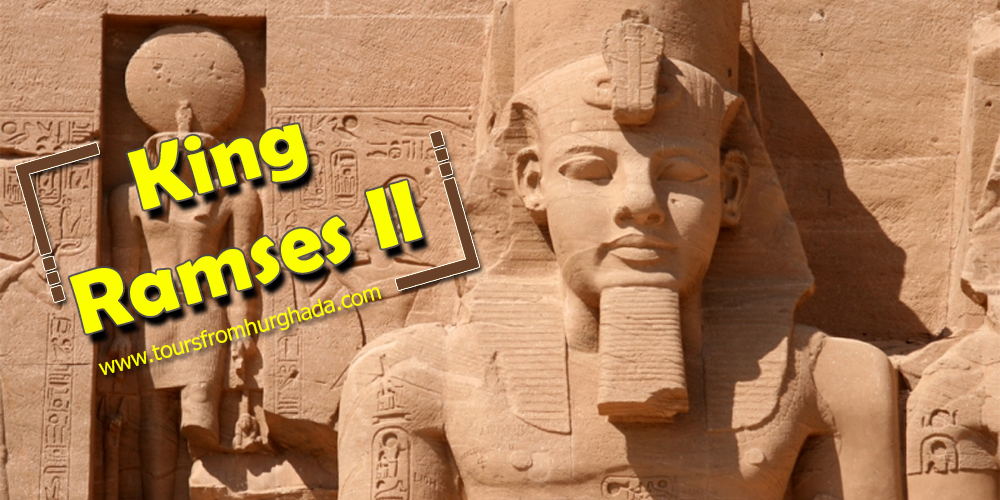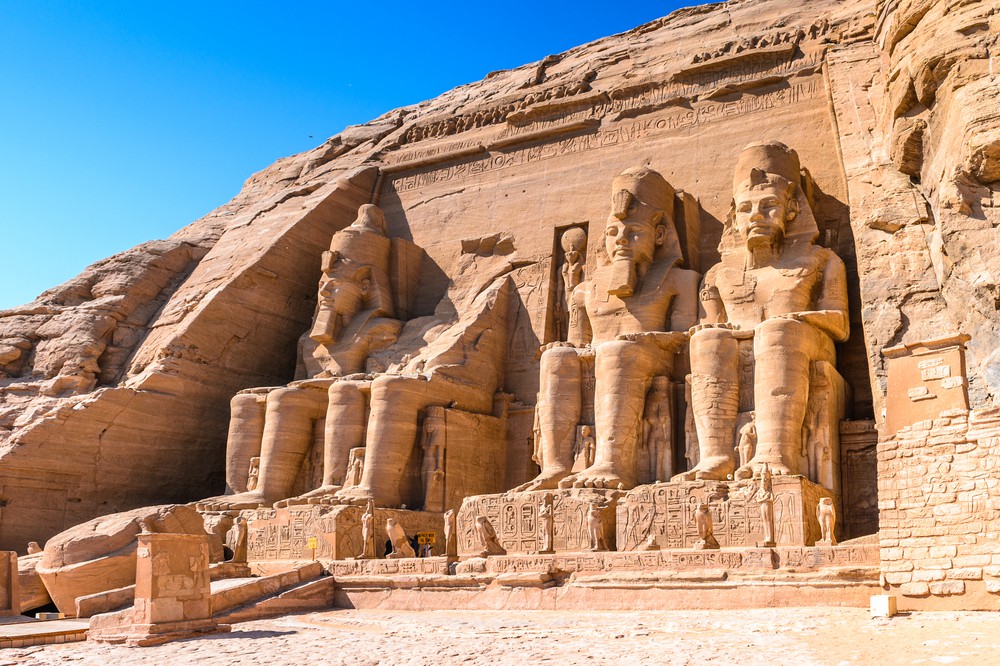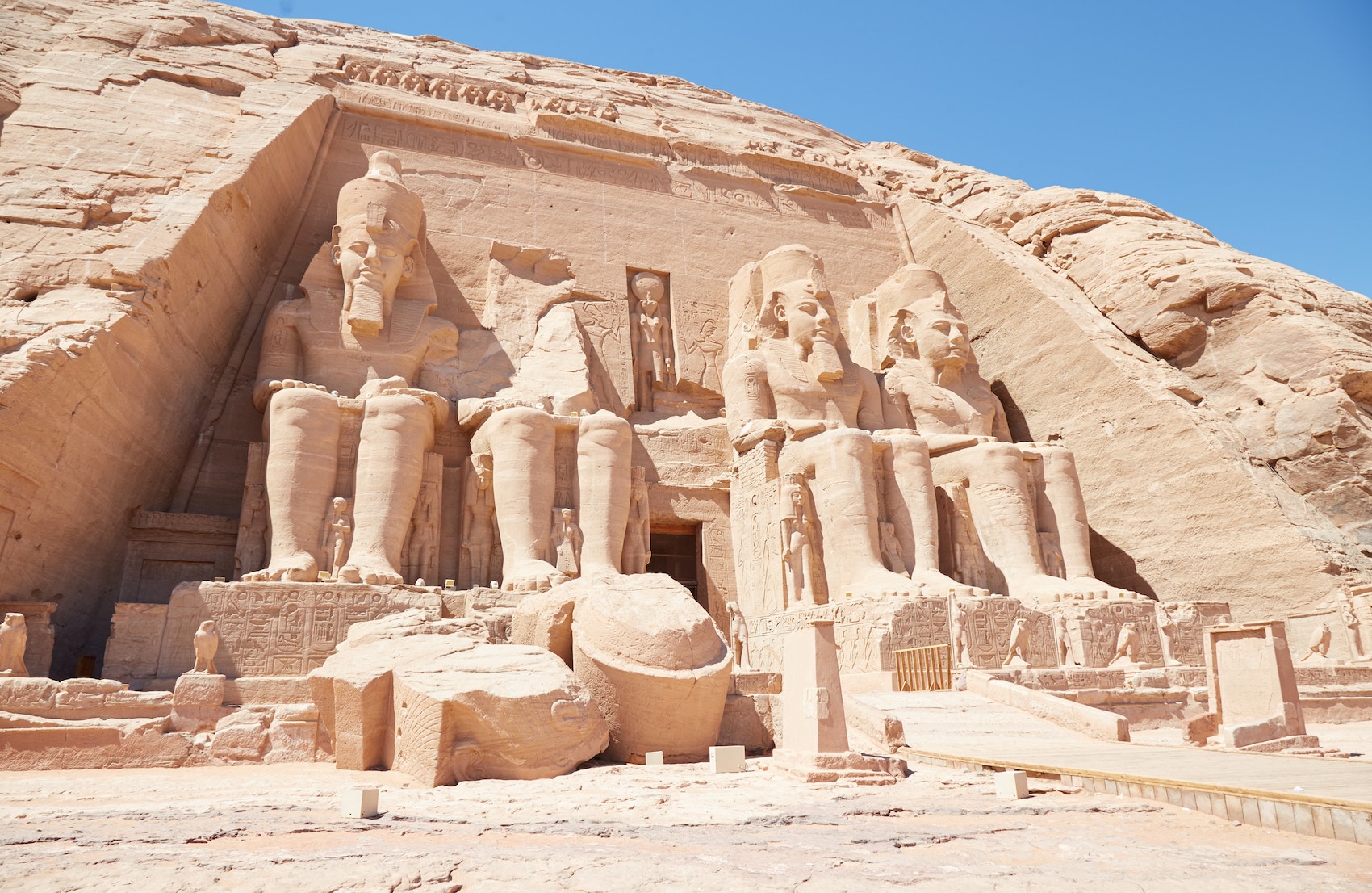Journey to the Past: Visiting the Temples of King Ramses II

I. Introduction to King Ramses II
King Ramses II, also known as Ramses the Great, was one of ancient Egypt's most powerful and influential pharaohs. He ruled Egypt for 66 years, from 1279 to 1213 BC, during the New Kingdom period. Ramses II was known for his military campaigns, extensive building projects, and his role in promoting Egyptian art and culture.
The historical significance of King Ramses II
King Ramses II left a lasting impact on ancient Egypt and its history. Some of his notable achievements include:
-
Battle of Kadesh: Ramses II's military campaign against the Hittites was one of the ancient world's largest and most significant battles. Despite being outnumbered, Ramses II managed to secure a peace treaty with the Hittites, ensuring Egypt a period of stability and prosperity.
-
Monumental Building Projects: Ramses II was a prolific builder, constructing numerous temples, statues, and tombs throughout Egypt. His most famous construction project is the temple complex at Abu Simbel, dedicated to himself and the deities Amun-Ra, Ra-Horakhty, and Ptah. This temple complex is an architectural marvel and a testament to Ramses II's grand vision.
Importance of visiting his temples
Visiting the temples of King Ramses II allows us to glimpse the splendour and majesty of ancient Egypt. Here are a few reasons why visiting these temples is a must for history and culture enthusiasts:
-
Historical Significance: The temples of King Ramses II showcase the grandeur and power of ancient Egypt. They provide valuable insights into the time's religious beliefs, artistic achievements, and architectural prowess. Exploring these temples allows visitors to step back in time and experience the rich history of Ramses II's reign.
-
Engineering Marvels: The temples built by Ramses II demonstrate exceptional engineering skills and architectural precision. The colossal statues, intricate reliefs, and massive pillars are a testament to the advanced building techniques employed by ancient Egyptians. Seeing these structures up close and appreciating their sheer size and complexity is awe-inspiring.
-
Art and Symbolism: The temples of Ramses II are an excellent showcase of ancient Egyptian art and symbolism. The intricate carvings and hieroglyphics depict scenes from battle, religious rituals, and daily life, giving us a glimpse into the beliefs and customs of the time. Studying these artistic masterpieces helps us understand the ancient Egyptian worldview and its significance.
Visiting the temples of King Ramses II is not just a journey into the past but also an opportunity to immerse oneself in the rich cultural heritage of ancient Egypt. Exploring the grandeur of these temples and marvelling at the achievements of Ramses the Great is an experience that should not be missed.
References:

Journey to the Past: Visiting the Temples of King Ramses II
In ancient Egypt, the pharaohs left a legacy of magnificent temples that still stand today as a testament to their power and grandeur. One such temple is the Temple of Abu Simbel, built by the great pharaoh King Ramses II during the New Kingdom period. This unique temple is a must-visit for those interested in ancient Egyptian history and architecture.
History and construction of the temple
The Temple of Abu Simbel was built around 1264 BCE by King Ramses II as a dedication to himself and the gods Amun, Ra-Horakhty, and Ptah. It was carved from a sandstone cliff and adorned with intricate carvings and statues. The construction of this temple was a remarkable feat, considering the limited tools and technology available at the time. The temple took approximately 20 years to complete and symbolised Ramses II's power and devotion to the gods.
Significance of the temple in ancient Egyptian culture
The Temple of Abu Simbel played a significant role in ancient Egyptian culture. It was a place of worship and a celebration of King Ramses II's military victories and his divine right to rule. The temple was strategically located on the west bank of the Nile River, near the border with Nubia. It served as a symbol of Egyptian control over the region and helped strengthen the pharaoh's position.
Highlights of the temple
The Temple of Abu Simbel is known for its impressive and well-preserved statues and carvings. The most famous feature of the temple is the four colossal statues of King Ramses II at the entrance, each standing at a height of 20 meters. These statues depict the pharaoh sitting on his throne, and their sheer size and intricate details are awe-inspiring.
Visitors can explore the different chambers inside the temple, each dedicated to a specific deity. The most significant chamber is the Great Temple, which contains a sanctuary with statues of Amun, Ra-Horakhty, and Ptah. The temple walls are adorned with reliefs depicting scenes from King Ramses II's military campaigns and religious ceremonies.
The Temple of Abu Simbel is a tourist attraction, a UNESCO World Heritage Site, and an important part of Egypt's cultural heritage. It serves as a reminder of the rich and fascinating history of ancient Egypt and the achievements of its pharaohs.
If you're planning a trip to Egypt, include a visit to the Temple of Abu Simbel in your itinerary. It is a once-in-a-lifetime experience that will transport you back in time to the glory days of ancient Egypt.
References:

III. The Ramesseum Temple
When exploring the rich history and magnificent architecture of ancient Egypt, King Ramses II is a name that cannot be ignored. One of the most remarkable temples built by this legendary pharaoh is the Ramesseum Temple, located on the west bank of the Nile River in Luxor, Egypt.
Overview of the Ramesseum Temple
The Ramesseum Temple is dedicated to the worship of Amun-Ra, one of the primary deities in the ancient Egyptian pantheon. It was constructed during the reign of Ramses II, who was known for his military successes and grand building projects. The temple is an impressive structure, covering an area of approximately 57,600 square meters. It features a series of colossal statues and intricate reliefs that depict scenes from the pharaoh's life and religious ceremonies.
Unique features and architectural design
The Ramesseum Temple is renowned for its grandeur and innovative architectural design. Some of its unique features include:
- The colossal statue of Ramses II: At the temple's entrance, visitors are greeted by a magnificent statue of Ramses II, also known as the "Colossus of Ramses." This statue is approximately 20 meters high and made of red granite. It portrays the pharaoh seated, symbolizing his royal power and authority.
- Hypostyle Hall: The temple's main structure consists of a large Hypostyle Hall, supported by massive columns adorned with elaborate carvings and hieroglyphics. This hall was used for religious rituals and ceremonies.
- Osirian Statues: Inside the temple, there are several Osirian statues, which represent Osiris, the god of the afterlife. These statues are vital to the temple's religious significance and convey the pharaoh's desire for eternal life.
- The Mortuary Temple: Adjacent to the main temple is the Mortuary Temple, where the rituals and ceremonies associated with the death and burial of Ramses II took place. This temple is smaller in size but equally fascinating.
History and stories associated with the temple
The Ramesseum Temple has a rich history linked to several intriguing tales and legends. One of the most famous stories associated with the temple is the "Ozymandias" poem by Percy Bysshe Shelley. The poem reflects upon the fall of empires and the fleeting nature of human achievements, using the colossal statue of Ramses II as a symbol of the inevitable passage of time.
Today, the Ramesseum Temple stands as a testament to the grandeur and legacy of King Ramses II. It offers visitors a glimpse into the fascinating world of ancient Egypt and serves as a reminder of the incredible architectural achievements of this ancient civilization.
So, if you're a history enthusiast or simply curious about the wonders of ancient Egypt, don't miss the opportunity to visit the Ramesseum Temple and witness the majestic remnants of a bygone era.

IV. Luxor Temple
Background and Significance of Luxor Temple
The Luxor Temple is one of the most remarkable ancient structures in Egypt. Located on the east bank of the Nile River in Luxor, this temple holds immense historical and cultural significance. Built during the New Kingdom period, it was dedicated to the Theban Triad of the gods Amun, Mut, and Khonsu. The temple was the centre of religious and political activities, making it an essential site in ancient Egypt.
Architectural Marvels and Artistic Details
The Luxor Temple showcases exceptional architectural design and intricate artistic details. Its entrance is marked by a grand pylon consisting of colossal statues of King Ramses II seated on his throne. The temple's colonnade, with its massive columns adorned with lotus and papyrus capitals, leads to the inner sanctuaries. The temple walls are beautifully decorated with scenes depicting various religious and historical events, including the famous Battle of Kadesh.
The innermost part of the Luxor Temple houses the sacred shrine, where offerings and rituals occur. The Holy of Holies, dedicated to the god Amun, was believed to be the dwelling place of the deity. The temple's carvings and reliefs provide a glimpse into ancient Egyptians' religious beliefs and practices, making it a treasure trove for historians and archaeologists.
Rituals and Ceremonies Held at the Temple
The Luxor Temple was a focal point for religious ceremonies and rituals in ancient Egypt. One of the most significant events was the Opet Festival, a celebration honouring the Theban Triad. The festival involved processions, offerings to the gods, performances, and entertainment. Thousands of worshippers would gather at the temple, creating a vibrant and lively atmosphere filled with music, dance, and festivities.
Another remarkable aspect of the Luxor Temple is its alignment with astronomical phenomena. The temple was strategically designed so that during the annual festival of the winter solstice, the sun's rays would illuminate the inner sanctuary, symbolizing the rebirth of the sun god Amun. This celestial alignment further emphasizes the connection between religion, cosmology, and architecture in ancient Egypt.
Luxor Temple is a testament to ancient Egyptians' extraordinary architectural achievements and religious practices. Exploring its ancient ruins allows visitors to immerse themselves in the rich history of Egypt and witness the incredible artistry and devotion of a bygone era. Whether you are an avid history enthusiast or simply curious about the wonders of the past, a visit to the Luxor Temple is an unforgettable experience.

V. The Temple of Karnak
The journey to the past continues with a visit to the majestic Temple of Karnak. Located in Luxor, Egypt, this ancient temple complex is a testament to the grandeur and power of King Ramses II.
Overview and History of the Temple of Karnak
The Temple of Karnak, also known as the "Fortified Village," was constructed over over 2,000 years, starting in the Middle Kingdom and extending into the Ptolemaic period. The temple complex is dedicated to the worship of Amun, Mut, and Khonsu, the main deities of ancient Egypt. It is said to be one of the largest religious complexes ever built.
Intricate carvings and hieroglyphics
As you explore the Temple of Karnak, the first thing that will capture your attention is the intricate carvings and hieroglyphics that adorn the walls. These carvings depict scenes from ancient Egyptian mythology, religious rituals, and important historical events. The attention to detail and craftsmanship is awe-inspiring and gives visitors a glimpse into the rich history of the civilization that once thrived here.
Sacred areas within the temple complex
Within the vast complex of the Temple of Karnak, several sacred areas are worth exploring:
-
The Great Hypostyle Hall: This hall is a marvel of architecture, with 134 massive columns arranged in rows. The columns are elaborately decorated with carvings and hieroglyphics, creating a breathtaking visual spectacle.
-
The Precinct of Amun-Re: This is the heart of the temple complex and houses the main sanctuary dedicated to Amun-Re, the king of the gods. The sanctuary features a sanctuary boat used in religious processions during festivals.
-
The Sacred Lake: Adjacent to the temple complex is a large man-made lake used for religious rituals and purification ceremonies. It is believed to represent the primordial ocean from which life emerged.
-
The Temple of Ptah: This smaller temple within the complex is dedicated to Ptah, the god of creation and patron deity of craftsmen. It features a beautiful courtyard and a sanctuary with statues of the god.
Visiting the Temple of Karnak is like stepping back in time and immersing yourself in the ancient world of Egypt. The grandeur and beauty of the temple complex are unmatched, making it a must-visit destination for history enthusiasts and anyone fascinated by ancient civilizations.
Whether you are exploring the intricate carvings and hieroglyphics or simply taking in the grandeur and scale of the temple, a visit to the Temple of Karnak is sure to be a memorable experience.
